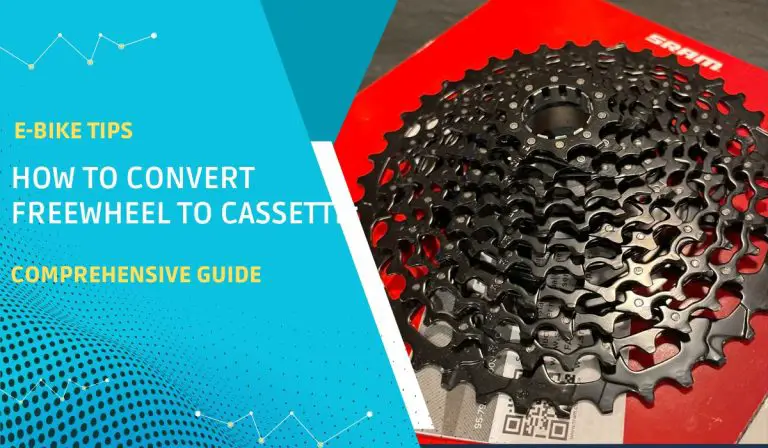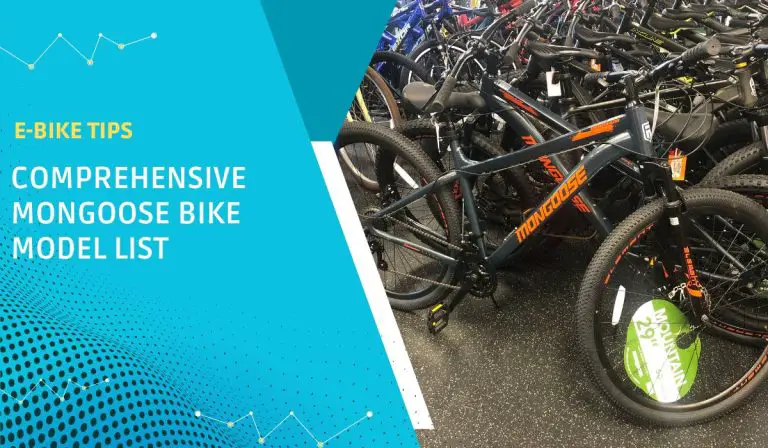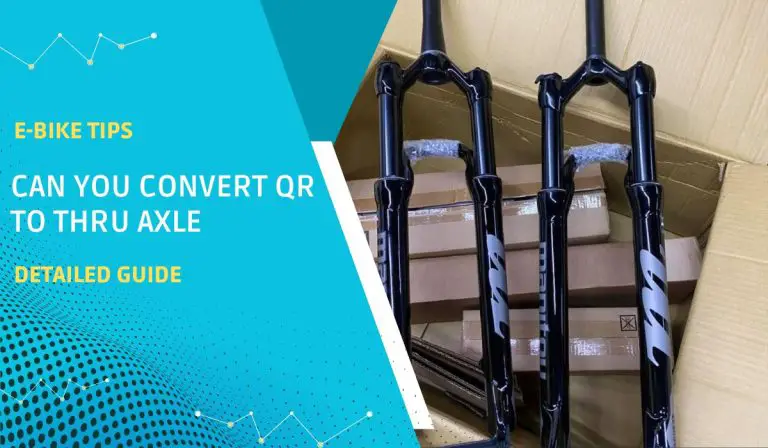The easiest way is to get it from the serial number, mostly located on the bike’s bottom bracket shell. The first 2-3 digits show the month and/or the year, while the last four digits tell the manufacturing order.
My journey with Robinson BMX bikes began in my childhood, thanks to my favorite uncle’s passion for them. Our bike rides were my introduction to Robinson BMX bikes, igniting my fascination with their models and history. As I grew, my interest deepened. I read books on them, conversed with fellow enthusiasts, and eventually wrote articles on these bikes. Today, I am a Robinson BMX expert, well-versed in cracking serial numbers and dating their different bike models. So, you should rest assured that I will guide you through unlocking your bike’s unique story.
In this article, I will show you how to find your bike’s serial number, how to use it to get the age of your bike, and other methods you can use. You will know how old your bike is at the end of this article. Let’s get on with it!
Skip To Section Here
How to Find Your Robinson Bmx Bike’s Serial Number
Begin by identifying potential locations where serial numbers are typically engraved on the frame: the bottom bracket shell, dropouts, and head tube.
- Bottom Bracket Shell: This is the area where the two pedal cranks connect to the frame. Check the underside of the bottom bracket shell, as serial numbers are often engraved here.
- Dropouts: The dropouts are the parts of the frame where the wheel axles slot in. On some Robinson BMX bikes, the serial number might be etched onto one of the dropouts. Check both the left and right dropouts for the serial number.
- Head Tube: The head tube is the front part of the frame where the forks attach. Occasionally, Robinson BMX bikes have their serial numbers stamped on the head tube. This location might be more visible and accessible compared to other areas.
Secure your bike on a stable surface for examination. Inspect the underside of the bottom bracket shell, where the pedal cranks attach, and carefully examine both dropouts for possible serial number etchings. The head tube, where the forks connect, is another place to check for the serial number. If the serial number is faint, use tools like a flashlight and magnifying glass to enhance visibility, or gently clean the area around the serial number with a soft cloth.
Document the serial number accurately, consider taking a photograph for future reference, and decode the serial number. Note any other unique features, such as frame design and components, as these can provide further insights into your bike’s history.
How to Use Your Robinson Bike’s Serial Number to Determine Its Age
Using your Robinson BMX bike’s serial number to determine its age involves understanding the pattern and structure of the serial number and then cross-referencing it with available resources. Here’s a step-by-step process:
Understand Serial Number Format and Decoding
Recognize that Robinson BMX serial numbers follow specific formats that change over different production years. These formats usually consist of a combination of letters and numbers, with variations in their arrangement and length.
Identify the portion of the serial number that likely corresponds to the production year. Some serial numbers might directly include the year, while others might have a specific code or digit sequence representing the year.
Research Reference Materials
Consult online resources, vintage BMX forums like the BMX Museum, and Robinson BMX enthusiast websites that compile lists of serial numbers and their corresponding production years. Look for databases or charts specific to Robinson BMX bikes, as these can serve as valuable references.
Cross-Reference Serial Number
Compare your bike’s serial number to the information in the reference materials. Match the decoded production year or code from your serial number with the relevant entry in the reference database. For example, if your serial number has the digit 3860018, the number breaks down to 3 = March, 86 = 1986, and 0018 is interpreted as the 18th bike built in March.
As seen at the BMX Museum:
Consider other factors.
Understand that production changes might not always align perfectly with calendar years. Sometimes, there could be overlapping serial number ranges across different years due to manufacturing variations.
Seek expert advice.
If you encounter challenges or uncertainties while deciphering the serial number, engage with the Robinson BMX community, like the Reddit community, r/bmx. Experienced collectors and enthusiasts can provide insights and share their knowledge about serial number patterns and their corresponding ages.
Document your findings.
Record the production year you’ve determined using the serial number. This information will enhance your bike’s historical value and provide context when discussing or displaying it.
Other Ways to Determine the Age of Your Robinson Bmx Bike
In addition to decoding the serial number, there are a few other methods and considerations you can use to date a Robinson BMX bike:
1. Frame Design and Features:
Examine the frame design, components, and features of your Robinson BMX bike. Different eras often had distinctive design elements. Research vintage catalogs, photos, and online resources that showcase the evolution of Robinson BMX bikes. Matching your bike’s design characteristics to those of known models from certain years can provide valuable clues about its age.
2. Component Identification:
Analyze the components used on your bike, such as the brakes, pedals, handlebars, and more. Components tend to change over time due to advancements in technology and design trends. Identify the specific models and years of the components to narrow down the possible production years of your bike.
3. Stamps and engravings:
Look for any additional stamps, engravings, or markings on the frame or components. Some manufacturers include date codes, logos, or model identifiers that can help you pinpoint the production year.
4. Catalogs and Advertisements:
Collect vintage catalogs, magazines, and advertisements related to Robinson BMX bikes. Manufacturers often publish catalogs showcasing their models and specifications for each year. By comparing your bike to the visuals and descriptions in these materials, you can get a better idea of its production era.
5. Previous Owners and Documentation:
If you acquired the bike from a previous owner, try to gather any available documentation, receipts, or stories about the bike’s history. Previous owners might have insights into when and where they acquired the bike, which can provide additional context for dating.
8. Combination of Methods:
Combining multiple methods—such as decoding the serial number, analyzing frame design, and consulting expert opinions—can provide a more accurate and comprehensive estimate of your Robinson BMX bike’s age.
Pros and cons of using these methods
Here are the pros and cons of using the different methods to date a Robinson BMX bike’s serial number:
| Method | Pros | Cons |
| Decoding the Serial Number | Inconsistent Practices: Not all bikes have relevant stamps or engravings, which sometimes makes this method unreliable. Lack of Documentation: Some stamps might not be well documented, leading to uncertainty. | Limited Information: Serial numbers might not always provide additional details about design changes or components. Missing Records: For some older bikes, serial number records might be incomplete or unavailable. |
| Frame Design and Features | Visual Identification: Examining frame design and features can offer a quick visual estimate of the era. Comprehensive Context: Understanding design changes can provide a broader historical perspective. | Evolution Overlap: Design elements can overlap between years, making pinpointing a specific production year challenging. Incomplete Information: This method might not accurately determine the exact production year. |
| Component Identification | Detailed Insights: Components can reveal specific model years, enhancing accuracy. Technical Understanding: Knowledge of components showcases your expertise in the bike’s details. | Component Swaps: Previous owners might have replaced components, leading to inaccuracies. Time-consuming: Identifying each component and researching their production years can be time-intensive. |
| Stamps and engravings | Additional Confirmation: Stamps or engravings can provide supplementary evidence for your estimation. Unique Markings: Special markings might be unique to certain production years, enhancing accuracy. | Inconsistent Practices: Not all bikes have relevant stamps or engravings, making this method unreliable in some cases. Lack of Documentation: Some stamps might not be well documented, leading to uncertainty. |
| Catalogs and advertisements | Visual Comparison: Directly comparing your bike to catalog images can be informative. Contextual Information: Catalogs often include specifications and details that aid in identification. | Availability: Vintage catalogs might not be readily accessible or might lack certain years. Subjective Interpretation: Your bike might closely resemble multiple catalog models, making it hard to definitively date. |
| Previous owners and documentation | Contextual Details: Previous owners can provide valuable stories and context about the bike’s history. Confirmation: Documentation like receipts can offer concrete proof of purchase dates. | Memory and Accuracy: Recollections might not always be accurate, especially if ownership changes hands multiple times. Missing Information: Documentation might not have been kept or transferred with the bike over the years. |
| Online BMX Communities | Collective Knowledge: Engaging with the BMX community can provide diverse insights from enthusiasts. Shared Experience: Others might have encountered similar bikes and can provide practical advice. | Varied Expertise: Not all community members are experts, so advice might vary in accuracy. Subjective Opinions: Interpretations can be influenced by personal experiences, leading to differing conclusions. |
| Consult Experts | High Expertise: Experts possess in-depth knowledge about serial numbers, design changes, and production years. Reliable Information: Insight experts can be more trustworthy and accurate. | Availability: Reaching out to experts might not always yield timely responses. Dependency: Relying solely on experts might limit your ability to make independent determinations. |
| Combination of methods | Comprehensive Accuracy: Combining multiple methods increases the likelihood of accurate dating. Cross-Verification: Using various approaches, one can validate findings through cross-referencing. | Complexity: Employing multiple methods can be time-consuming and overwhelming. Overlapping Challenges: Each method’s limitations might persist even when combined. |
Ultimately, combining methods can enhance the accuracy of dating your Robinson BMX bike’s production year. While each approach has its advantages and drawbacks, integrating them can provide a well-rounded understanding of your bike’s history.
Conclusion
With this comprehensive guide, you’ve got a variety of methods to engage! From cracking serial numbers to giving your bike a style check, consulting the experts, and diving into community wisdom, it’s like having a bunch of treasure maps.
With the guide I have provided in this article, I hope you know how to date your Robinson BMX bike. Thank you for reading!





